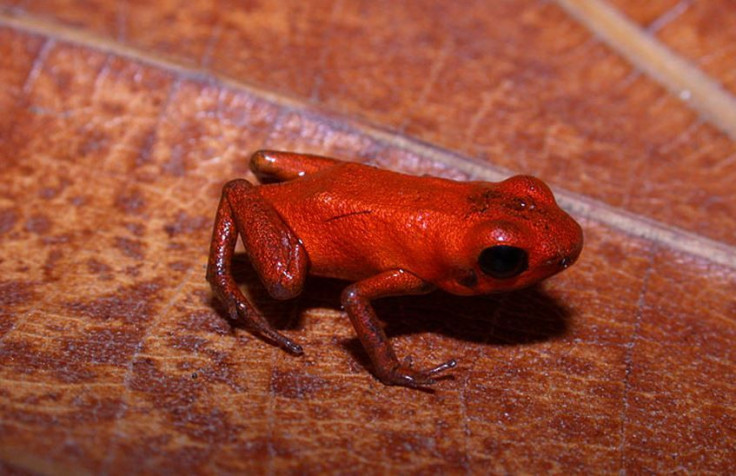Scientists Discover New Species Of Poison Dart Frog With ‘A Unique Call’ In Panama

Scientists have discovered a new species of poison dart frog in the Donoso district of Panama. The tiny, orange-colored frog, which is as small as a fingernail, measures only half an inch.
The species, which has been named “Andinobates geminisae,” was identified by researchers from the Smithsonian Tropical Research Institute and the Universidad Autónoma de Chiriquí in Panama and the Universidad de los Andes in Colombia. The frog, which belongs to a group called “A. minutus,” can be distinguished by its unique call and smooth, orange-colored skin, the researchers said in a study, published in the journal Zootaxa.
“The new species superficially looks much more like the strawberry poison dart frog (Oophaga pumilio),” study co-author Andrew Crawford, a professor of evolutionary genetics and biostatistics at the Colombian university, told National Geographic. “Perhaps A. geminisae had been observed previously but was confused with Oophaga.”
According to the researchers, the specimen for this species was collected in February 2011 in Rio Caño area in the district of Donoso, Colón Province, Panama. After Crawford sequenced the DNA of the frog, it was confirmed that this was a new species of Andinobates.
“They've known it was there for several years. However, they were not sure if it was only a variety of another poison dart frog species, Oophaga pumilio, which exhibits tremendous color variation,” Cesar Jaramillo, a Smithsonian herpetologist, said in a statement. “Based on morphological characteristics of the adult and the tadpole, I thought it might be a new species of Andinobates.”
Because this new frog species appears to be only found in a tiny part of Panama, habitat loss is a major threat to its existence. The researchers, therefore, recommend the formulation of special conservation plans to guarantee the survival of the species, which is also sought after by those in the pet trade.
“It is important we save some of this frog’s tiny habitat to be able to study this unusual species more,” Crawford told National Geographic.
© Copyright IBTimes 2024. All rights reserved.






















